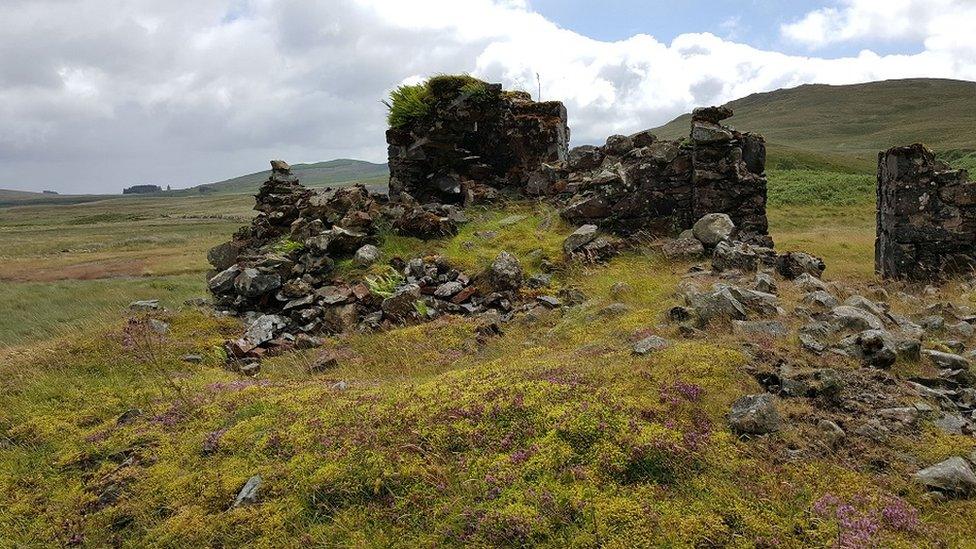Unearthing the story of Scotland's industrial ghost village
- Published
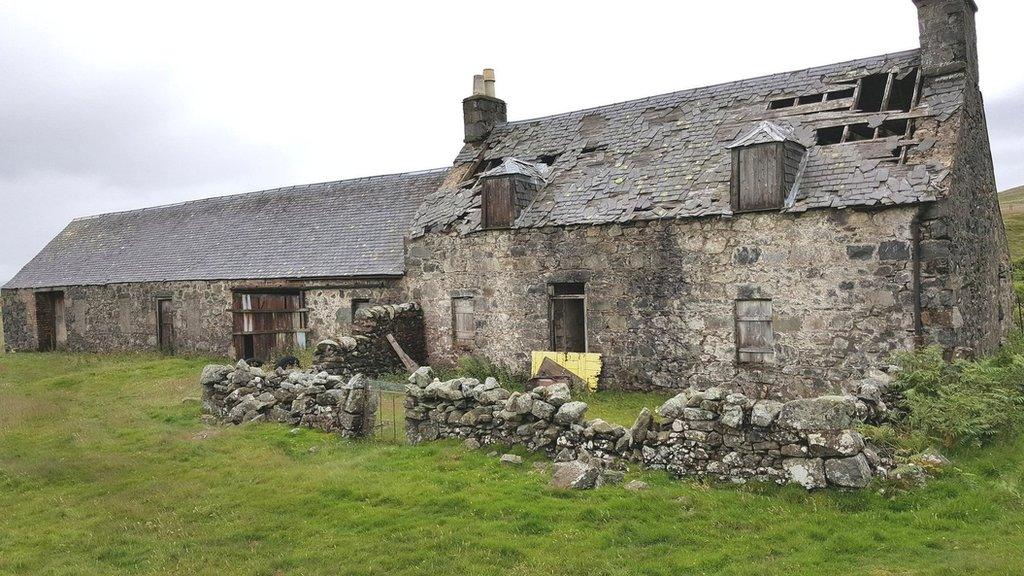
The industrial ghost village of Woodhead sits in the Galloway hills near Carsphairn
A thriving village of more than 300 residents once stood on a remote south of Scotland hillside.
Now all that remains of the Woodhead lead mine near Carsphairn in Dumfries and Galloway are the crumbling outlines of where its people lived, worked and were educated.
The last residents moved out in the 1950s.
With its eerie appearance, it has been left as no more than a "ghost" of its former life.
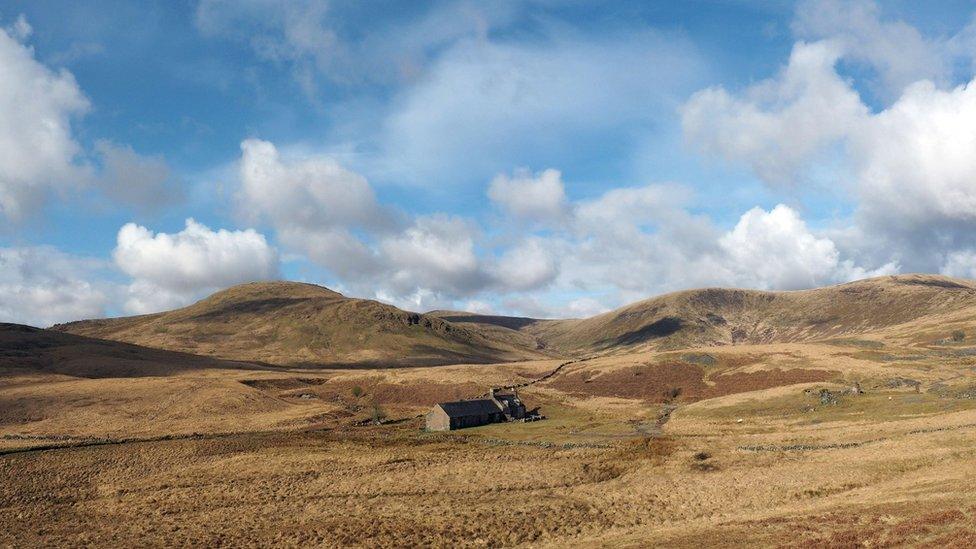
The thriving village stood on a now desolate hillside in south-west Scotland
Local historian Anna Campbell said the story began with a chance find.
"The lead mine started in 1838 when the tenant at Woodhead noticed lumps of lead in the water," she said.
"The owner of the land - who was Colonel Macadam Cathcart of Craigengillen - was a man who was keen to exploit a new enterprise from there, which he did."
The rise - and fall - of the village was rapid.
"In the 1841 census there were just 22 houses on the site - bear in mind that this was a site that had nothing, it was a brown hillside before that time," she said.
"By 1851 there were 39 houses and the population is recorded as being 301, which is quite good."
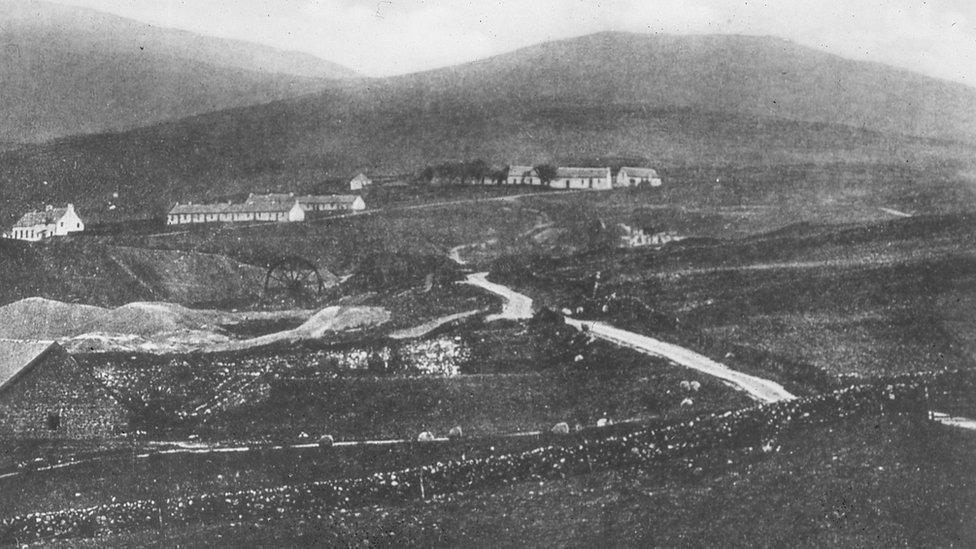
Hundreds of people lived around the mine during its operation in the 19th Century
Ms Campbell said numbers probably rose higher than that but they started to decline soon after.
"After 1853, there was a slump in the price of lead and, with more difficult work up there, it became evident that miners were going to leave," she said.
Some went to nearby Dalmellington while others travelled much further afield to mines in America and Australia.
"By 1861, there were far fewer people living there," she said.
"Lead was still mined until 1873 - so the length of this lead mine producing lead was really only about 35 years.
"The population went from zero in 1838 up to about 301 in 1851 and then it declined over the years until the end of the century when very few people were living up there."
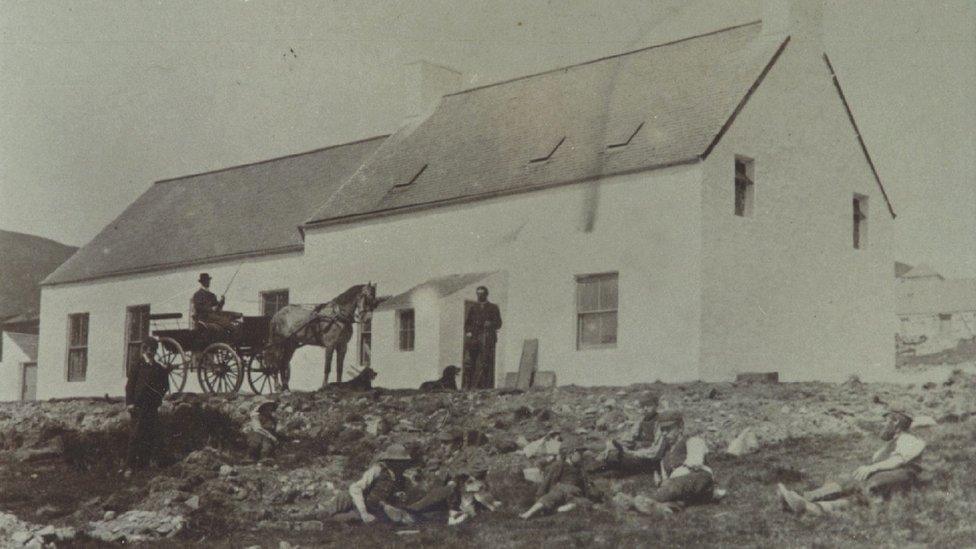
A school for up to about 50 children was part of the village

The operational life of the Woodhead site was only about 35 years
At its peak, it must have been an impressive site with rows of "sturdy, slate-roofed" houses, a library and even its own school.
"At one time, in 1851, the number of children at school was 49, which was quite amazing," said Ms Campbell.
A church was also built a mile from the mine.
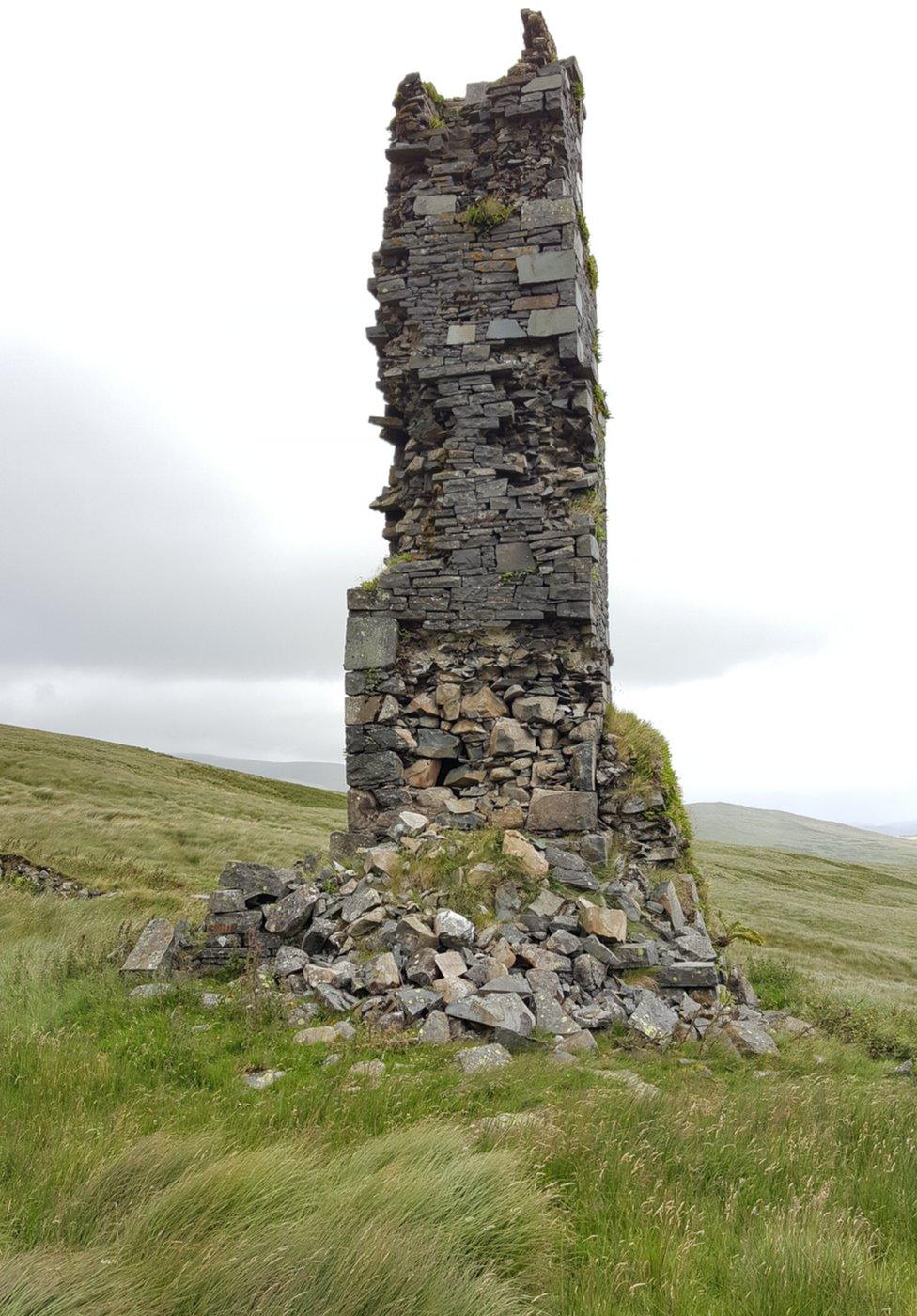
Many parts of the area's industrial heritage remain on site
The man behind the mining community, Col Cathcart, who was described as "highly regarded and highly respected", did not live to see its complete demise but he would have witnessed the start of its decline.
"He died in 1865, probably knowing by then that his dream of a lead mining enterprise in Carsphairn was really shattered," said Ms Campbell.
This week - on 13 and 14 July - the public is being invited to join in a survey of the site, external as part of the The Society of Antiquaries of Scotland's Dig It! project.
Claire Williamson, senior archaeologist with Rathmell Archaeology, said they would get to see something special.
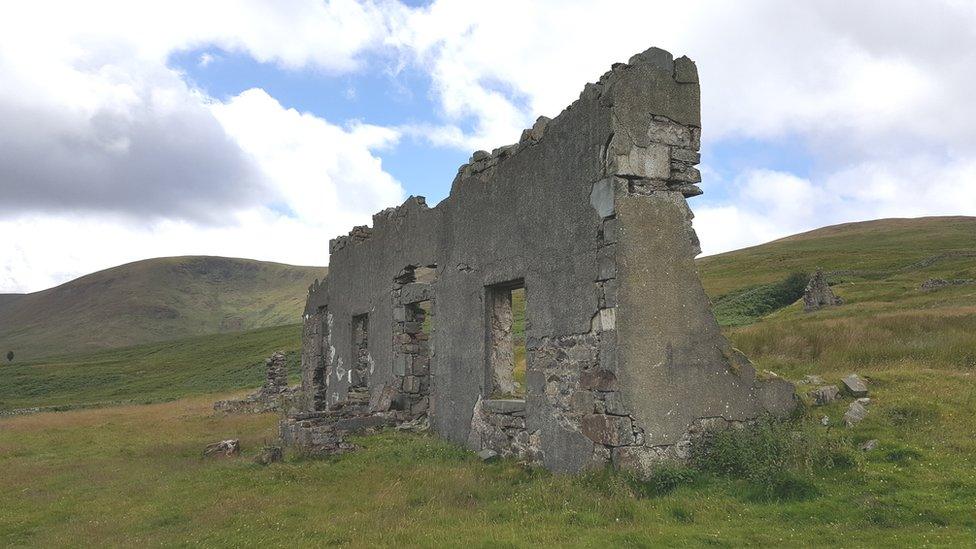
The last residents moved out of the village in the 1950s
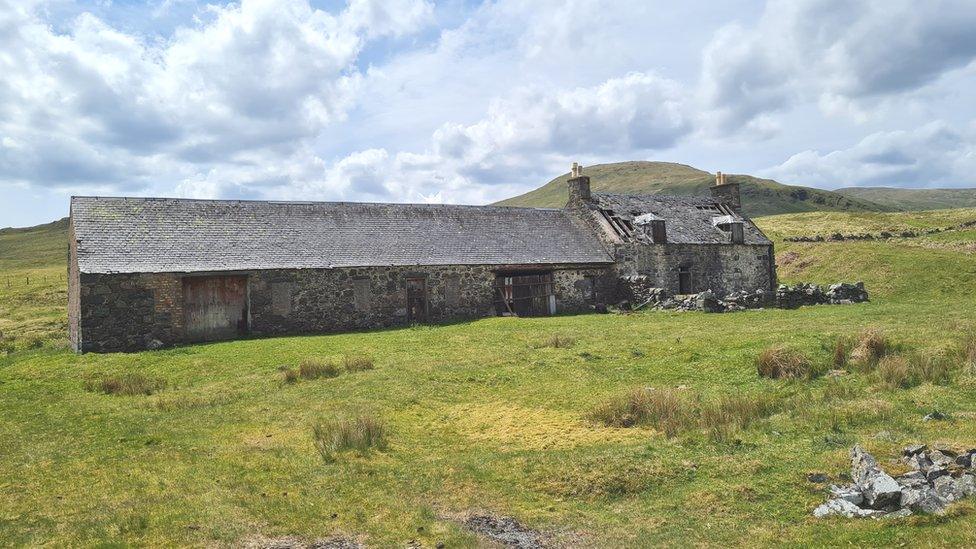
The public is being invited to help document the condition of the remaining buildings
"Today when you go there, it's an amazing sight because it's spread over a large area but a lot of it still survives as ruins," she said.
"You can also see the large scale of the workings areas as well, even though a lot of the machinery has been removed.
"It's also just one of those sites that really triggers the imagination and takes people by surprise."
The ruins are located about a half-hour walk from Carsphairn.
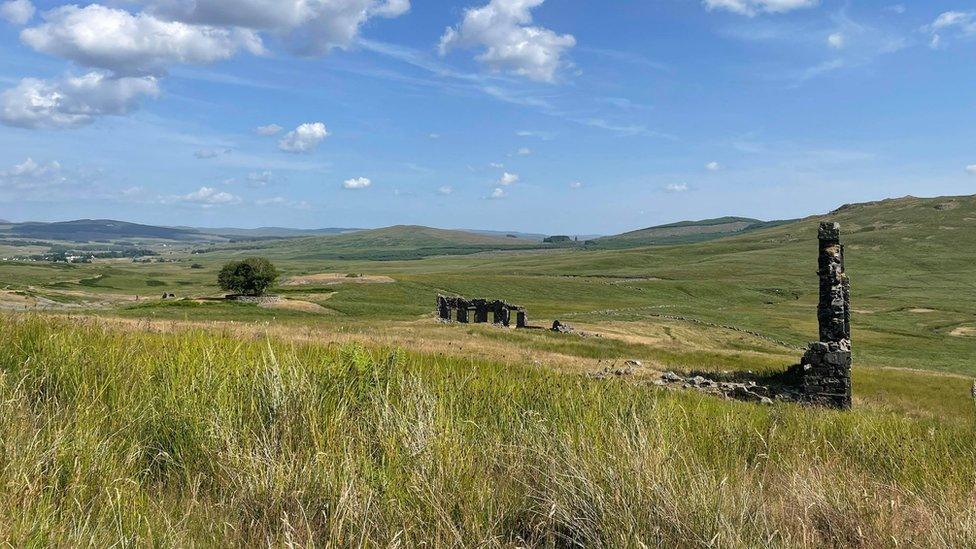
Pieces of the old village and mine are dotted across the remote hillside
The public survey event later this week hopes to preserve the story of the site.
"It creates a record of these structures as they are now before they get any more dilapidated, before they fall apart," said Ms Williamson.
"It's a different aspect to archaeology - because obviously archaeology tends to be all about the digging - but there is much more to it.
"We care about all things old and from the past."
All images are copyrighted.
Related topics
- Published21 June 2022
